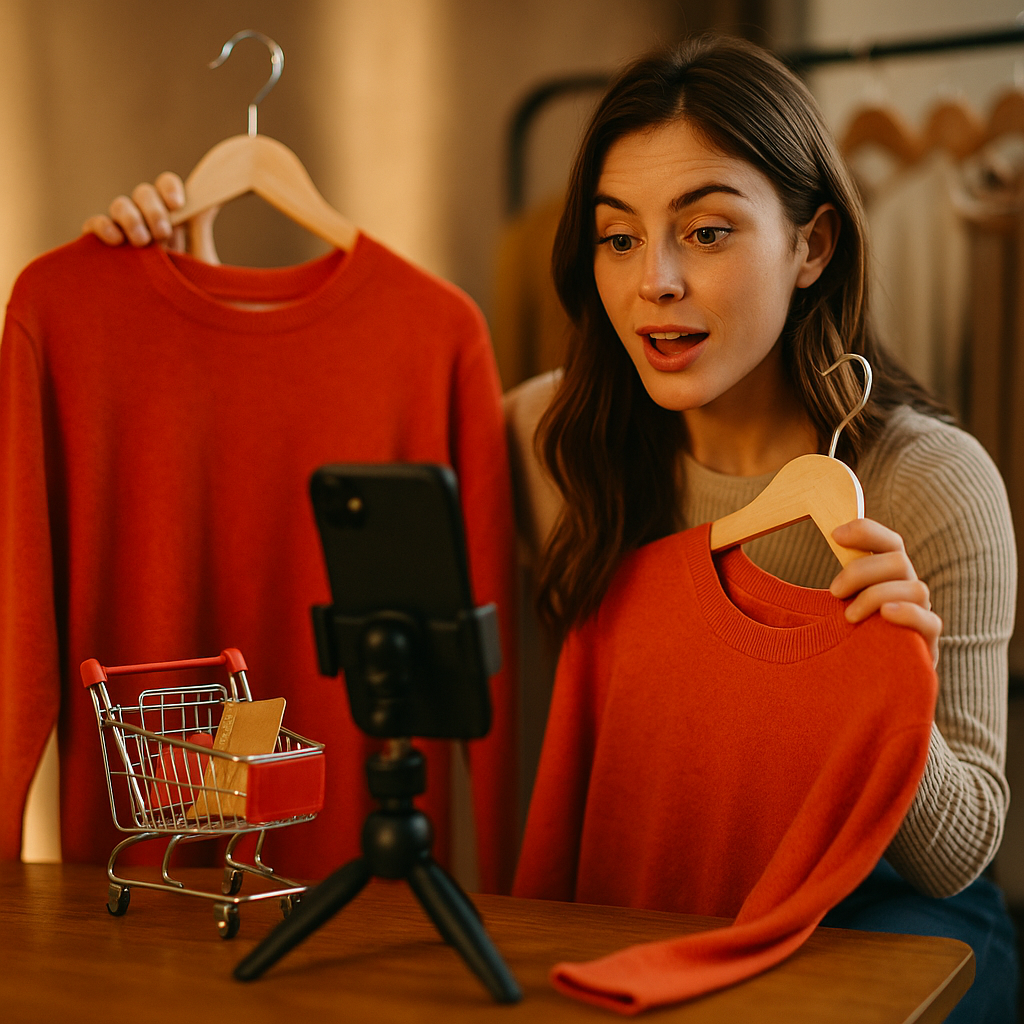The psychology of live shopping has become a game-changer in digital commerce, fundamentally altering how people buy online. By blending entertainment and instant interaction, live streams push viewers toward unplanned purchases. But what truly drives impulse buys during streams? Let’s dig into the psychological triggers and behavioral dynamics shaping this red-hot retail trend.
Social Proof: The Collective Influence of Live Viewers
One of the most powerful psychological catalysts behind live shopping is social proof. Seeing hundreds or thousands of fellow viewers tuning in creates an atmosphere of excitement and urgency. Psychologist Robert Cialdini highlighted how individuals often look to others when making decisions, especially under uncertainty—a perfect fit for live shopping environments.
During live streams, visible chats, real-time likes, and on-screen purchase pop-ups validate the product’s desirability. The retailer’s visible sales tally and excited customer reactions in real time build trust, reducing hesitancy and promoting the feeling that “everyone else is buying.” According to a 2024 Shopify Insights report, over 60% of viewers say they’re more likely to purchase when they see positive live reactions from fellow shoppers.
Scarcity and Urgency: The Live Stream Fear of Missing Out
Scarcity and urgency are classic sales tactics, but live shopping amplifies their effect with a digital twist. Streamers often use limited-time offers, exclusive bundle deals, and live-only discounts to trigger spontaneous buying decisions. The countdown timers and repeated mentions of “only while stocks last” tap directly into the fear of missing out (FOMO).
Psychologically, when products are available for only a few minutes—or until they sell out—viewers feel compelled to act before they lose the opportunity. Data from the interactive commerce platform Bambuser in early 2025 show that flash deals in live streams increase conversion rates by as much as 37%, underscoring how time pressure and exclusivity fuel impulse buys.
Trust and Authenticity: Building Confidence with Real-Time Engagement
No one wants to buy from a faceless brand. Live shopping shines in its ability to foster trust and authenticity. Viewers can ask questions, witness instant product demonstrations, and see spontaneous reactions from hosts and other buyers. This dynamic transparency bridges the gap between traditional online shopping and the reassurance of an in-store experience.
Micro-influencers and hosts who project genuine excitement—and answer tough questions openly—play a pivotal role in breaking down buyer skepticism. This real-time dialogue nurtures a sense of belonging, helping viewers feel like part of an exclusive club. According to Trustpilot’s 2025 “Consumer Confidence Survey,” over 70% of shoppers say direct interaction in live streams makes them feel safer purchasing new products.
Entertainment Value: Why Fun Fosters Buying Urges
Another key force in the psychology of live shopping is the power of entertainment. These streams aren’t just sales pitches—they’re engaging shows. Hosts often incorporate games, giveaways, and behind-the-scenes peeks. The result? Shopping morphs from a chore into an experience packed with dopamine-boosting surprises.
This blend of utility and entertainment keeps viewers hooked. In fact, a 2025 McKinsey Live Commerce analysis found that buyers who describe a stream as “fun” are 2.4 times more likely to make impulse purchases. The entertainment factor relaxes defenses toward spending money, helping shoppers justify unplanned purchases as part of the fun or as a “shared experience.”
Personalization and Interactivity: Tailoring the Experience to Individual Shoppers
Personalization and interactivity form the backbone of effective live shopping. Stream technology in 2025 now allows for tailored product recommendations, viewer polls, and real-time shout-outs, creating a sense of individual attention. By addressing viewers by name or customizing offers based on chat interactions, hosts can tap into the psychological need for recognition.
Personalized suggestions and acknowledgments boost the self-importance of buyers. According to an Adobe Live Commerce report released this year, 68% of buyers are more likely to make a purchase in streams where hosts suggest products based on their preferences or answers. This approach triggers impulse buys by making each viewer feel seen—and specially catered to—rather than part of an anonymous crowd.
Emotional Triggers: The Fast Pathway to Impulse Decisions
Ultimately, live shopping excels by stimulating emotional triggers. The thrill of securing a deal, the sense of participation in a fast-paced event, and the direct connection with charismatic hosts all work together to lower rational defenses. Emotional contagion—the psychological phenomenon where people “catch” emotions from others—runs high during exciting or humorous streams, leading to unplanned purchases.
Beyond happiness or excitement, feelings of nostalgia, aspiration (wanting to be like the host), and community belonging also come into play. Neuromarketing studies in early 2025 reveal that live shopping audiences are 72% more responsive if the content elicits genuine emotion. This emotional currency tips the scales from consideration to action—sometimes in mere seconds.
In summary, the psychology of live shopping harnesses a powerful cocktail of social proof, scarcity, trust, entertainment, personalization, and emotion. By understanding these triggers, brands and shoppers alike can navigate—and benefit from—the dynamic world of impulse buying during live streams.
FAQs: Impulse Buying in Live Shopping Streams
-
What are impulse buys during live shopping?
Impulse buys are unplanned purchases made by viewers during live shopping streams, often triggered by emotional reactions, time-limited deals, or recommendations from the host and fellow shoppers.
-
How do live streamers encourage impulse purchases?
They use social proof, create urgency with limited-time offers, build trust through live demonstrations, and personalize interactions to make viewers feel valued—all proven drivers of impulsive decision-making.
-
Why does live shopping feel more exciting than traditional online shopping?
The entertainment, interactive features, and sense of real-time community make live shopping much more engaging and emotionally charged than static e-commerce experiences.
-
Can brands use these psychological triggers ethically?
Yes, responsible brands focus on creating genuine value, transparency, and fair deals—balancing persuasive tactics with honesty and customer well-being.
-
How can shoppers avoid regret after impulse buying in live streams?
Consider setting a spending limit before watching streams, pausing before checking out, and researching products when possible—preventing buyer’s remorse while still enjoying the experience.
